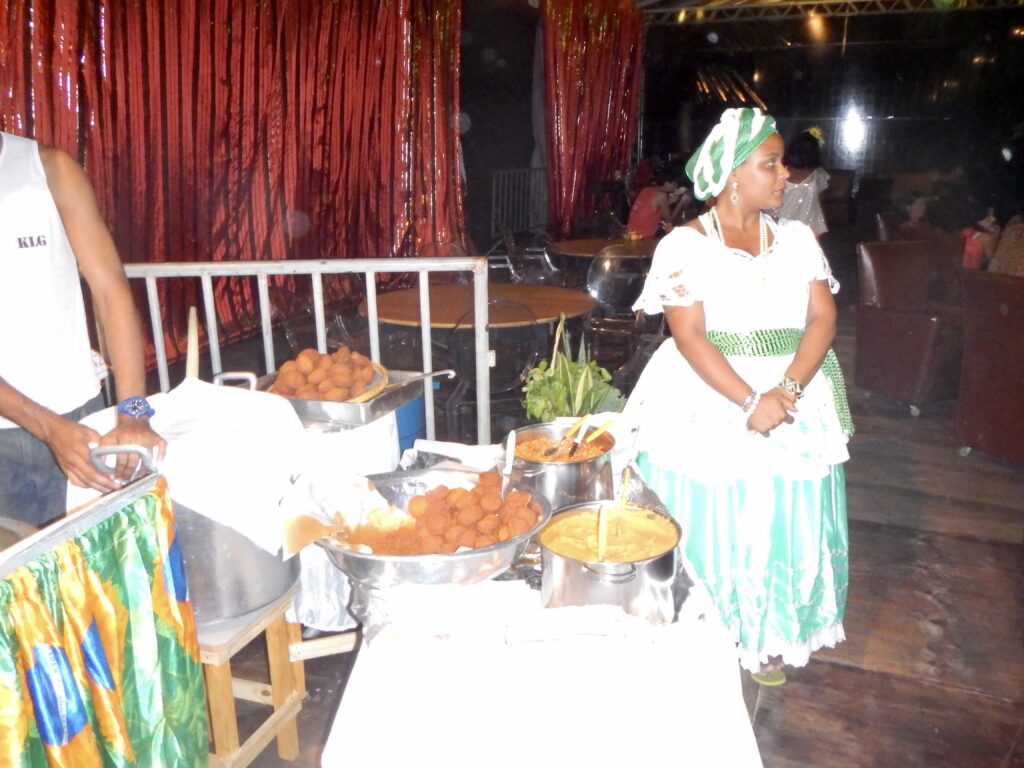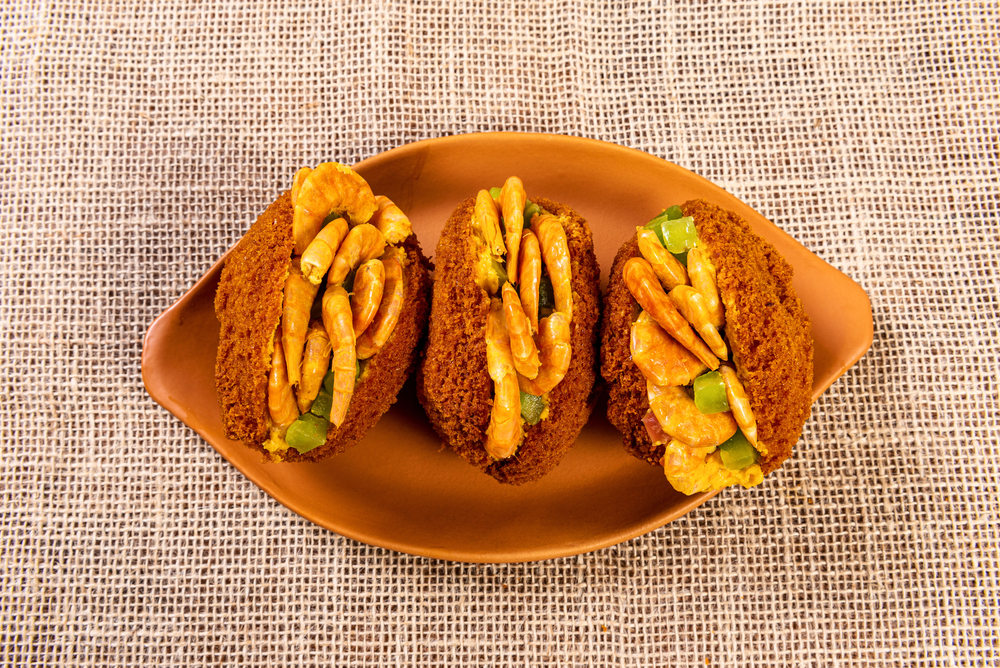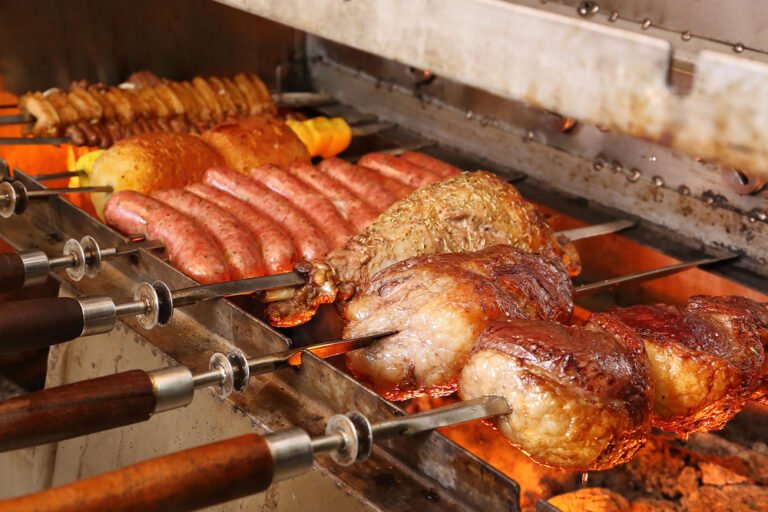If you’re looking for a taste of Brazil, Acarajé is a dish that’s worth trying. This street food is a savory fritter that’s made from black-eyed peas, onions, and spices. It’s a popular snack in the northeastern region of Brazil, and it has a unique history and flavor that sets it apart from other fritters around the world.
Table of Content
ToggleOrigins of Acarajé
Acarajé has its roots in West Africa, where it was a popular street food among the Yoruba people. The dish made its way to Brazil in the 19th century, along with many other African traditions. It became a staple food among the Afro-Brazilian population, who often sold it in the streets.
The dish has cultural significance for Afro-Brazilians, who view it as a symbol of their heritage and identity. It’s also associated with the Candomblé religion, which blends African and Catholic traditions. In Candomblé, acarajé is considered a sacred food that’s offered to the gods.
Ingredients
The key ingredient in Acarajé is black-eyed peas. These are soaked, peeled, and mashed to create a smooth dough that’s then seasoned with onions, garlic, and spices such as ginger and cumin. The dough is formed into balls and then deep-fried in palm oil, which gives the fritters their distinctive flavor.
Acarajé is typically served with a variety of toppings, including hot sauce, shrimp, and salad. Many vendors also offer a version called Abará, which is wrapped in banana leaves and steamed instead of fried.
Evolution of Acarajé
Acarajé has evolved over time, both in terms of its ingredients and its preparation. In the early days, it was often made with red palm oil, which has a distinct reddish-orange color and a stronger flavor than the palm oil used today. Over time, the recipe was adapted to use the more widely available white palm oil.
In recent years, some vendors have also started experimenting with new flavors and ingredients. For example, some serve a vegetarian version that substitutes tofu for shrimp, while others offer a sweet version of the fritters filled with coconut cream.

Nutrition Information
Like many deep-fried foods, Acarajé is high in calories and fat. However, it’s also a good source of protein and fiber, thanks to the black-eyed peas. The dish is also rich in vitamins and minerals such as iron and potassium. As with any fried food, moderation is key when it comes to enjoying Acarajé.
Recipe for Acarajé
If you want to try making Acarajé at home, here’s a recipe to get you started:
Ingredients:
- 2 cups of black-eyed peas
- 1 onion, chopped
- 2 cloves of garlic, minced
- 1 tablespoon of ginger, grated
- 1 tablespoon of cumin
- Salt to taste
- Palm oil for frying
Instructions:
Soak the black-eyed peas in water overnight.
Drain the peas and peel them by rubbing them between your hands. This will remove the skins and create a smooth dough.
In a blender, mix the peas with the onion, garlic, ginger, cumin, and salt. Blend until smooth.
Form the mixture into balls about the size of a golf ball.
Heat the palm oil in a deep fryer or heavy-bottomed pot until it reaches 350°F.
Fry the balls in the hot oil until they’re golden brown, about 4-5 minutes.
Serve with your choice of toppings,
Acaraje tolerance
Acarajé is generally well-tolerated by most people, but some individuals may have difficulty digesting it due to its high-fat content. Additionally, those with a sensitivity or allergy to black-eyed peas, onions, or garlic should avoid this dish.
As with any deep-fried food, excessive consumption of acarajé can also lead to digestive issues such as bloating, stomach discomfort, and diarrhea. Moderation is key when it comes to enjoying this delicious street food.
It’s always important to listen to your body and understand your own tolerance for different foods. If you experience any adverse reactions after eating acarajé, it’s best to speak with a healthcare professional to determine the cause and appropriate course of action.
Conclusion
If you are planning a trip to Brazil, trying Acarajé is a must for any food lover. Not only is it delicious and unique street food, but it also has a fascinating cultural and historical significance.
Acarajé is deeply rooted in Afro-Brazilian traditions, and its consumption is tied to the Candomblé religion. By trying Acarajé, you will not only taste a popular Brazilian snack, but also gain insight into the country’s cultural heritage and religious practices.
In addition to its cultural significance, Acarajé is also a tasty and filling snack that is perfect for a quick bite while exploring the streets of Brazil. The crispy and savory fritters are often served with a variety of toppings, including shrimp, hot sauce, and salad, providing a range of flavors and textures that are sure to satisfy your taste buds.
Moreover, Acarajé is a nutritious snack that is rich in protein, fiber, vitamins and minerals. While it is high in calories and fat due to its deep-fried preparation, it can be enjoyed in moderation as part of a balanced diet.
Overall, trying Acarajé is a delicious way to experience Brazil’s unique culture and cuisine, and explore the country’s rich history and traditions. Whether you are a food lover, a cultural enthusiast, or just looking for a tasty and satisfying snack, Acarajé is a must-try when you visit Brazil












